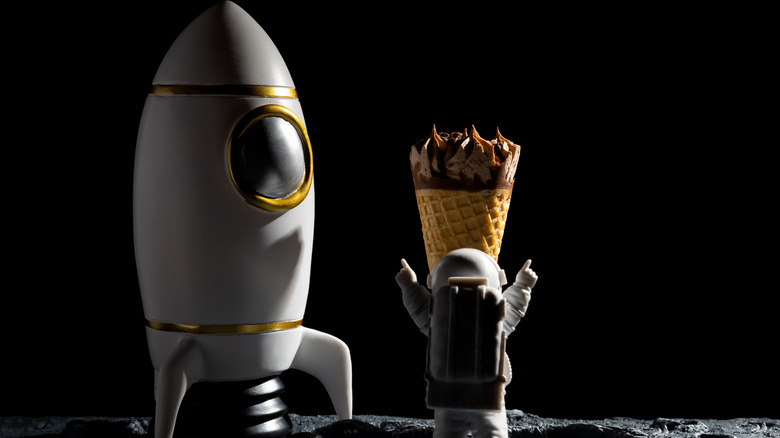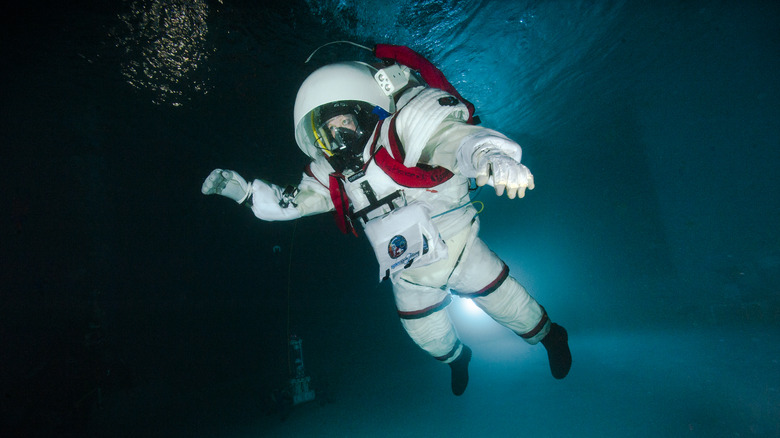Who Invented Astronaut Ice Cream?
When you reflect upon the most monumental, era-defining innovations and discoveries to emerge from The National Aeronautics and Space Administration (NASA) since its conception in 1958, ice cream probably isn't the first thing that comes to mind. Then again, maybe it is. Remember when you were a kid and your school would take field trips to a local space museum where they sold that chalky, bizarre stuff they tried to pass off as ice cream? Maybe you loved it, maybe you hated it. Regardless, it was cool to imagine astronauts traversing the solar system while chomping on a stick of it.
However, "Astronaut Ice Cream" is rarely on the menu for frontiersmen on the other side of the world's atmosphere. It was first consumed by passengers of the Apollo 7 mission in 1968, but it never really caught on and hasn't been served on shuttles since (per Air and Space). In fact, it wasn't even NASA that invented the stuff in the first place. It was a company called Whirlpool Corporation that developed it for NASA after they were commissioned to design a "Space Menu" that could be used on celestial voyages (via Marion Star).
The history of astronaut ice cream
It was in 1960 that the Air Force contacted Whirlpool Corporation about what was needed for a 14 day trip to space with three people aboard the craft. The menu would need to incorporate sufficient food and beverages to sustain the passengers. Conditions in space only allow for so much variety, however. A zero-gravity environment is sensitive to what it is exposed to in such a compact space, so any foods that carried the possibility of floating crumbs had to be promptly dismissed to avoid contamination within the craft. The freeze-dry version of ice cream was compact, clean, and tasty enough that it made it onto the list (per Marion Star).
But how do you make a creamy, runny, liquid substance like ice cream space-ready? Essentially, real ice cream is put into a vacuum chamber and frozen to 60 degrees below zero, turning all the water into ice. Pressure within the chamber is then lowered and heat is applied slowly, allowing the ice to go from solid to vapor without passing through the liquid phase. The process is repeated over and over again until all that's left is the dry, powdery lump of sweetness that you can buy at most any space museum gift shop today (per Astronaut Foods).

